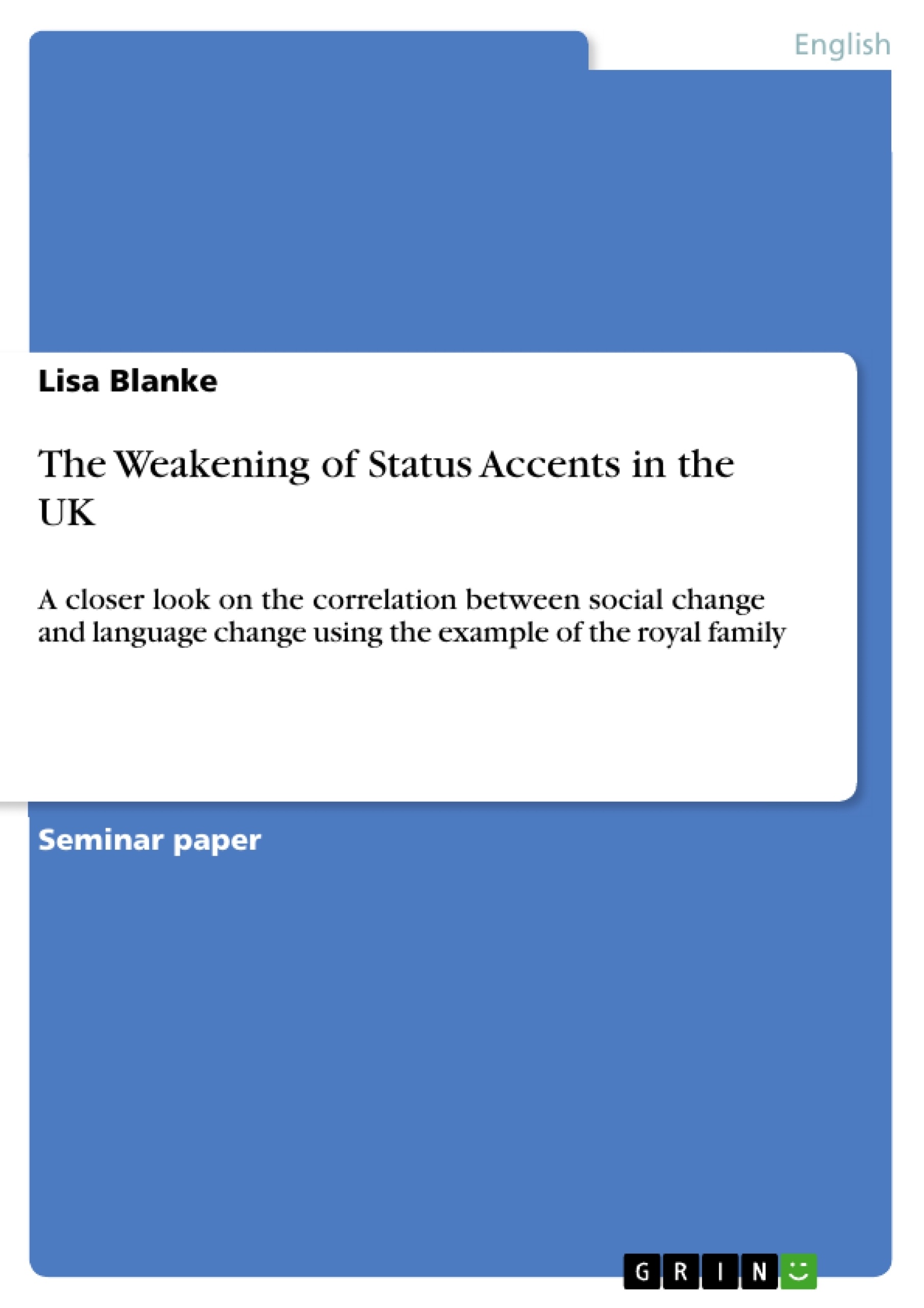Today, English is one of the most spoken languages in the world and has a huge impact on the everyday life of millions of people. As a lingua franca, English is the world’s widely used language and is spoken in 101 countries all over the world , each of them adding their own flavour to the mixture. So exposed to influences of all kinds, the English language seems to be constantly changing. The one thing that unites the huge amount of varieties, and therefore people, has to be the root of the language they share, which is English as it is spoken in England by the family of the English society and especially by the Queen, Elizabeth II. But as the monarchy seems weakened through social changes, ‘the Queen’s English’, which is often put on a level with Received Pronunciation (RP), is no longer as popular. So Britain is a current example of language change in times of globalisation and democratisation, which shapes language ideology. In this context, it might be interesting to take a closer look at what ‘Queen’s English’ stands for and why it changes by reference to studies over a longer time period, to draw inferences with regard to social reasons.
Inhaltsverzeichnis (Table of Contents)
- Introduction
- Sociolinguistic Background
- Class accents
- Does the Queen Speak ‘Queen's English’?
- How Did the Perception Change?
- Changing the Public Presentation of Royals
- The Tried and Trusted
- A Breath of Fresh Air
- Discussion
- Conclusion
Zielsetzung und Themenschwerpunkte (Objectives and Key Themes)
The main objective of this paper is to examine the weakening of status accents in the UK, specifically focusing on the example of the royal family. By analyzing the correlation between social change and language change, the paper aims to explore the evolving perception of "Queen's English" in relation to Received Pronunciation (RP) and its implications for language ideology in a globalized and democratized society.
- The role of social change in shaping language ideology
- The evolving perception of "Queen's English" and its relationship to RP
- The impact of globalization and democratization on language norms
- The influence of the monarchy on language usage and social values
- The relationship between class, language, and social status
Zusammenfassung der Kapitel (Chapter Summaries)
The introduction sets the stage by discussing the global prevalence of English and its constant evolution. It highlights the significance of "Queen's English" and its connection to RP, suggesting that its popularity is waning due to social changes. The paper aims to investigate the reasons behind this shift.
The chapter on sociolinguistic background explores the relationship between language and national identity. It emphasizes the role of the British monarchy in shaping language ideology, particularly through the notion of "Queen's English." The concept of "standard language" is analyzed, acknowledging both its positive connotations and its potential for ridicule. The chapter then delves into the concept of "destandardization" and "demotization," highlighting how social change can impact language norms.
Schlüsselwörter (Keywords)
The key terms and concepts explored in this work include language change, social change, language ideology, "Queen's English," Received Pronunciation (RP), globalization, democratization, standard language, destandardization, demotization, class, and social status.
- Quote paper
- Lisa Blanke (Author), 2013, The Weakening of Status Accents in the UK, Munich, GRIN Verlag, https://www.grin.com/document/264212



